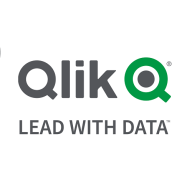

Qlik Sense and Splunk Enterprise Platform are competitors in the data analytics and business intelligence category. Qlik Sense seems to have the upper hand in user-friendly visualization tools, while Splunk excels in robust analytics and security features.
Features: Qlik Sense offers enhanced data profiling, powerful data preparation tools, and flexible in-memory data exploration. It has self-service capabilities and allows quick creation of complex visuals and dashboards. Splunk Enterprise Platform is valued for its comprehensive analytics, integration with various applications, and robust security features.
Room for Improvement: Qlik Sense could improve in real-time analytics, better data integration, and dashboard customization. Users suggest more statistical functions and a more intuitive scripting environment. Splunk Enterprise could offer more out-of-the-box monitoring solutions and reduce complexity for non-technical users, as well as provide more prebuilt dashboards and AI capabilities.
Ease of Deployment and Customer Service: Qlik Sense supports on-premises and private cloud deployments, offering flexibility for businesses. Customer service receives mixed reviews for slower response times. Splunk Enterprise supports on-premises and hybrid cloud deployments, suitable for larger organizations. Its customer service is rated well, though the platform's complexity can affect user experience. Splunk's support is considered expensive but technically capable.
Pricing and ROI: Qlik Sense is viewed as competitively priced, especially for larger organizations, though some find it costly compared to smaller alternatives. Its ROI is often quickly realized through improved decision-making. Splunk is seen as expensive, particularly for small to medium businesses. Its robust analytics justify the cost for many larger organizations, but achieving ROI may take longer due to initial expenses.
In my organization, we moved from OBI to Qlik Sense due to limitations with OBI, resulting in very high ROI.
While tech support is comprehensive, the stability of Qlik Sense means I generally do not need it.
In Turkey, the consultant firms are very professional, and they support you.
I think they lack in the support system.
It performs well in terms of performance and load compared to others.
I believe it is easily scalable.
The stability is very good.
Providing an API feature to access data from the dashboard or QEDs could be beneficial.
Power BI has better visualizations and interactions with updates in 2023 that provide ease of use.
Maybe more AI or real-time analytics could be incorporated.
It is complex for inexperienced cybersecurity engineers and requires experienced personnel to handle it effectively.
Compared to Power BI, it is definitely costly.
Core-based licensing operates on a subscription mode, allowing unlimited users.
Among the BI tools and data analytics tools, Qlik is the most expensive.
Splunk Enterprise Platform is expensive.
From an end-user perspective, it's convenient and performance-oriented, providing something meaningful from all the organization's data.
It is a single product that I can use as an ETL database, BI, and more.
It has an interactive interface with Qlik graphs, pivot, and interactivity, which makes it easier to use than other tools.
The features that have proven most effective for real-time data analysis include parts of the platform and its automation capabilities.


Qlik Sense is a visual analytics and business intelligence (BI) platform that gives users full control over their system’s data. From this platform they can control every aspect of their system data. It maximizes an organization’s ability to make decisions driven by their data.
Benefits of Qlik Sense
Some of the benefits of using Qlik Sense include:
Reviews from Real Users
Qlik Sense stands out among its competitors for a number of reasons. Two major ones are its associative analytics technology and its remote access capability. Qlik Sense employs an associative analytics engine that gives users the ability to take their data analytics to the next level. Users can create visual connections between different datasets spread across their network, creating deep insights that enable users to gain a full understanding of their data. This engine is easily scaled up to allow a large number of users to benefit from the deep insights that it provides. Users can access Qlik Sense from anywhere in the world. Qlik Sense has an online portal that can be used consistently from anywhere at all. Having the ability to remotely analyze data gives users flexibility when it comes to choosing how to deploy their manpower.
Jarno L., the managing director of B2IT, writes, “The associative technology features are the solution's most valuable aspects. Qlik was the first company to implement an in-memory associative analytics engine. This basically means that all data is loaded into memory, but it also means that instead of joining data together, the data is associated together. From the front end, from the user interface point of view, data can be joined or included or excluded on the fly. It can be drilled down and drilled through and users can slice and dice it and that type of thing can be done from anywhere in the data to any other place in the data. It doesn't have to be predefined. It doesn't have to have hierarchies or anything like that.”
Tami S., the senior business intelligence analyst at the La Jolla Group, writes, “With the changing business landscape, it is nice to access Qlik Sense through an external website. As an organization when we use QlikView Desktop, we need to connect to our internal network. We can access QlikView through the QlikView access point but the website has a little different look and feel than the desktop application. We appreciate that Qlik Sense is browser-based and the user experience is the same whether at home, in the office or on a boat. As long as the user has internet access, performance is the same.”
Explore data of any type and value — no matter where it lives in your data ecosystem.
Drive business resilience by monitoring, alerting and reporting on your operations.
Create custom dashboards and data visualizations to unlock insights from anywhere — in your operations center, on the desktop, in the field and on the go.
Use data from anywhere across your entire organization so you can make meaningful decisions fast.
We monitor all Data Visualization reviews to prevent fraudulent reviews and keep review quality high. We do not post reviews by company employees or direct competitors. We validate each review for authenticity via cross-reference with LinkedIn, and personal follow-up with the reviewer when necessary.